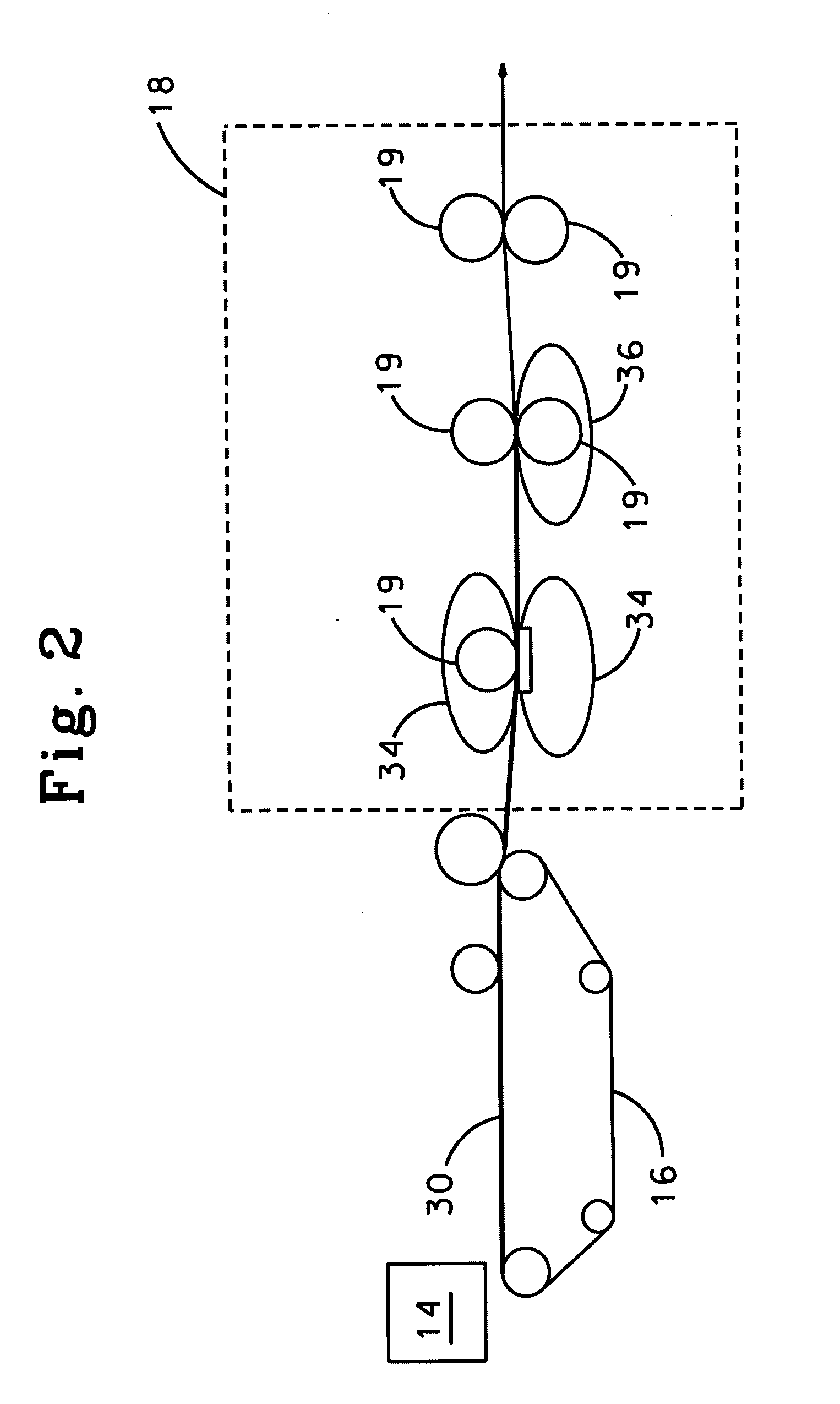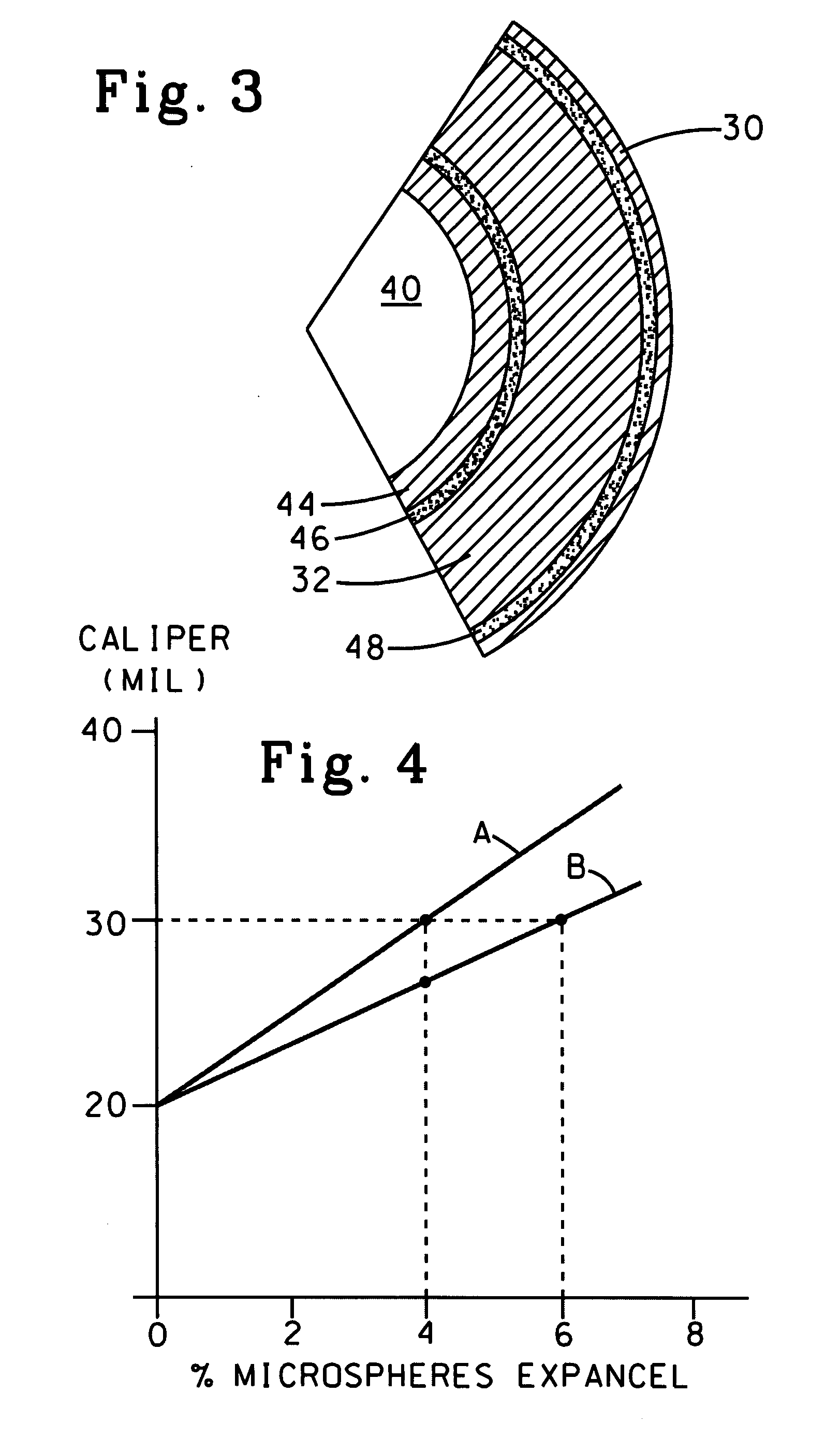Paperboard material with expanded polymeric microspheres
a polymeric microsphere and paperboard technology, applied in the field of articles, can solve the problems of less compatible printing, low heat transfer rate, and high cost of multi-layered and multi-walled paper-based containers, and achieve the effects of increasing the smoothness of paperboard substrates, reducing the amount of expanded polymeric microspheres, and increasing heat transfer ra
- Summary
- Abstract
- Description
- Claims
- Application Information
AI Technical Summary
Benefits of technology
Problems solved by technology
Method used
Image
Examples
Embodiment Construction
[0015] While this invention is susceptible of embodiment in many different forms, there is shown in the drawings and will herein be described in detail preferred embodiments of the invention with the understanding that the present disclosure is to be considered as an exemplification of the principles of the invention and is not intended to limit the paperboard aspect of the invention to the embodiments illustrated.
[0016] Containers such as cups or folding carton are widely used for dispensing hot and cold beverages. Paperboard substrates coated with an insulating layer often provide acceptable insulative properties, however, the outer layer is usually a foamed thermoplastic polymeric layer which raises the cost and is difficult to print. Corrugated and double-walled paperboard containers also generally provide suitable insulative properties, but are more complex and expensive to manufacture than single ply containers. Both of these alternatives use more material in their constructi...
PUM
| Property | Measurement | Unit |
|---|---|---|
| diameter | aaaaa | aaaaa |
| thicknesses | aaaaa | aaaaa |
| thicknesses | aaaaa | aaaaa |
Abstract
Description
Claims
Application Information
 Login to View More
Login to View More - R&D
- Intellectual Property
- Life Sciences
- Materials
- Tech Scout
- Unparalleled Data Quality
- Higher Quality Content
- 60% Fewer Hallucinations
Browse by: Latest US Patents, China's latest patents, Technical Efficacy Thesaurus, Application Domain, Technology Topic, Popular Technical Reports.
© 2025 PatSnap. All rights reserved.Legal|Privacy policy|Modern Slavery Act Transparency Statement|Sitemap|About US| Contact US: help@patsnap.com



